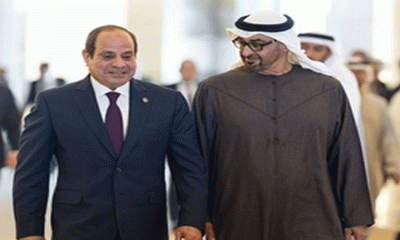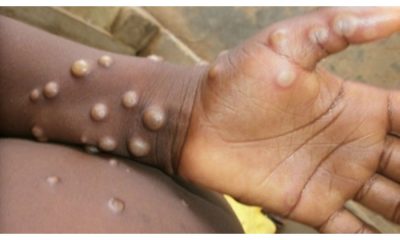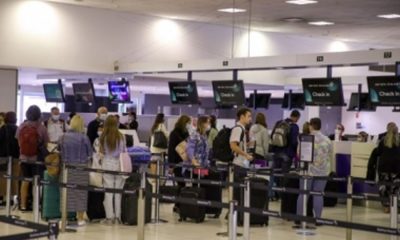Business
Trade pacts with UAE, Australia will fuel economic growth: Finance Minister
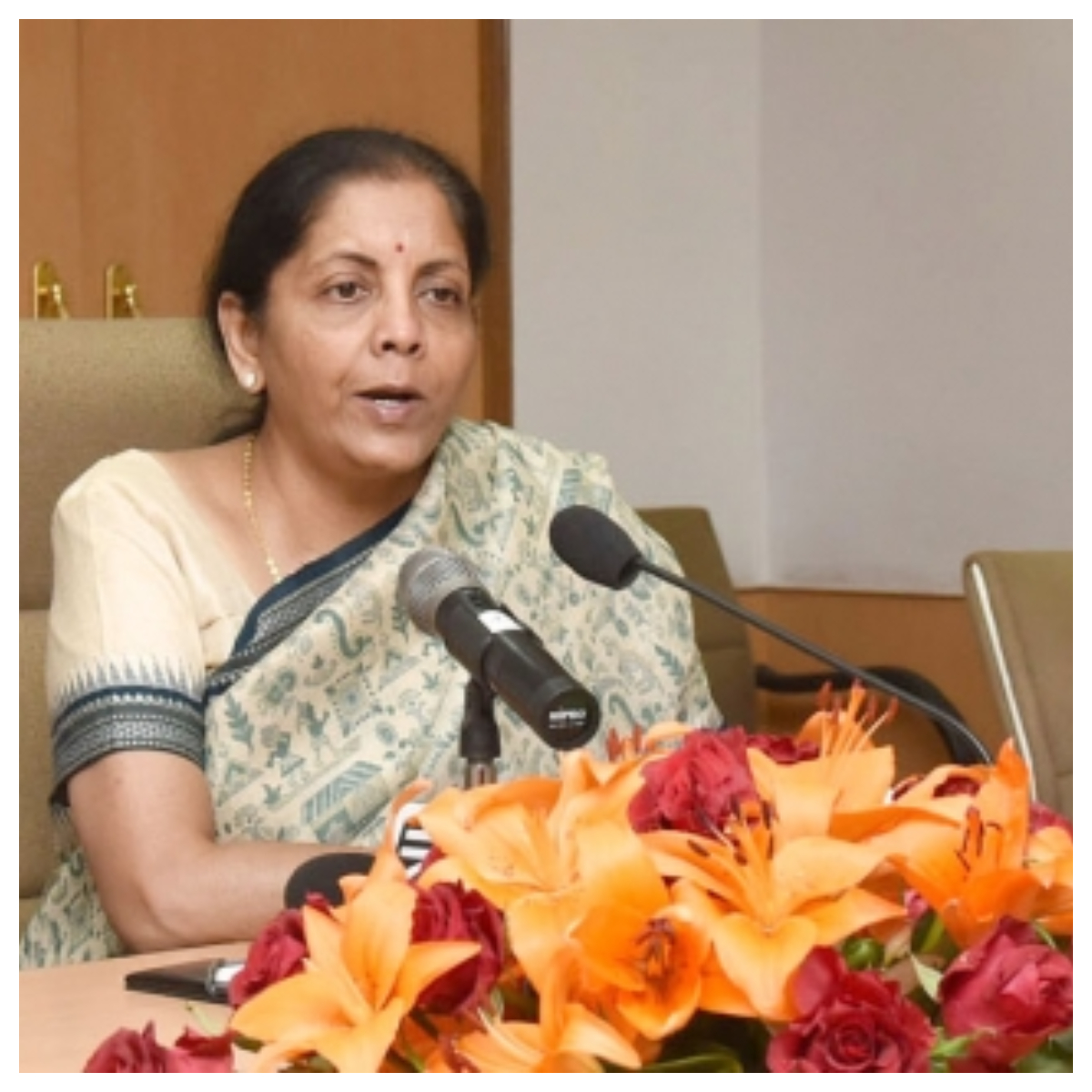
Finance Minister Nirmala Sitharaman said on Tuesday the country’s trade pacts with the UAE and Australia will chart the way for economic growth.
Speaking at the stakeholders’ outreach programme on India-UAE CEPA and India-Australia ECTA here, Sitharaman said awareness events about these pacts are happening across the country.
She also said the Director General of Foreign Trade (DGFT) has been asked to translate the details of the trade pacts in Tamil and share them with the media and stakeholders.
Tamil Nadu has a long-time connection with the leather sector, and the industry has achieved modernisation, Sitharaman said, as she went on to add that Tamil Nadu has been a frontrunner in trade for a long time.
She urged entrepreneurs to know the features of these agreements and make best use of them.
“If you want any support in connection with the agreements, feel free to convey it to us,” she added.
“The industry should equip itself to cater to the changing tastes and preferences of consumers post Covid. Access the available markets that are part of the agreements,” she said.
According to Sitharaman, when Prime Minister Narendra Modi visited the UAE some years back, the Royal family promised $75 billion worth investments in India.
Sitharaman added that a formal agreement has also been signed, and entrepreneurs should scale up their businesses to get share from the investments.
“We are now dependent on one country for APIs (active pharmaceutical ingredients). So enough investments need to be made after much thought. I request the state government to invite raw material makers to invest here. We should not depend on others for our raw materials. Backward and forward industries should be supported by the governments,” she said.
On the trade pact with Australia, Sitharaman said it is for the well-being of the Indo-Pacific economy.
While there are many hurdles because of the Russia-Ukraine war, there are also opportunities since their exports are hit, she said.
Speaking at the event, Union Minister of State for Commerce and Industry, Anupriya Patel, said all efforts are being made to reach out to the stakeholders all over the country to explain the details of the trade agreements.
“The India-UAE trade agreement was concluded in record time. India is the second largest trading partner of the UAE. Several benefits will flow out of the comprehensive agreement between the two countries. There is huge scope and there are so many employment opportunities to be created. Bilateral trade will double in the next five years,” Patel said.
“The India-Australia agreement is a clear signal to the other developed economies to partner with India,” she added.
Union Minister of State for Fisheries, Animal Husbandry & Dairying, L.A Murugan, congratulated the Department of Commerce and Industry for organising the awareness event in Chennai.
“We are making huge exports in the marine sector. For the first time in history, Rs 20,000 crore was announced for fisheries under the Pradhan Mantri Matsya Sampada Yojana (PMMSY) by Nirmala Sitharaman,” he said.
Murugan also said that Rs 7,500 crore was allocated for fisheries infrastructure development by Sitharaman.
Despite the challenges posed by the pandemic, India’s maritime sector registered growth, Murugan said, adding that seafood exports will touch Rs 1 lakh crore before 2025.
Tamil Nadu Minister for MSME, T.M. Anbarasan, Consul General of Australia, Chennai, Sarah Kirlew, industry leaders from various sectors and other stakeholders took part in the event.
Business
Sensex, Nifty extend gains on buying in heavyweights

Mumbai, Oct 7: Indian stock markets continued their upward trend on Tuesday, supported by buying in major stocks such as ICICI Bank, ITC and more.
However, profit booking in select banking stocks limited the overall gains during the early trading hours.
The Sensex, which rose more than 100 points in early trade, was trading at 81,843, up 52 points or 0.06 per cent.
The Nifty also gained 34 points or 0.14 per cent to reach 25,112 after hitting an intra-day high of 25,140.
Among the top gainers on the Sensex were Power Grid, Bajaj Finance, HCL Tech, Bharti Airtel, ICICI Bank, Ultratech Cement, NTPC, Hindustan Unilever, Bajaj Finserv, and BEL, which rose between 0.3 per cent and 1.6 per cent.
On the other hand, Trent, Axis Bank, Tata Motors, TCS, SBI, Kotak Bank, Tech Mahindra, HDFC Bank, and Infosys were among the major losers, slipping up to 2.7 per cent.
In the broader market, the Nifty MidCap index gained 0.08 per cent, while the Nifty SmallCap index rose 0.41 per cent — showing continued interest from investors in smaller companies.
Among sectoral indices, Nifty Metal and Nifty IT were the top performers, each gaining 0.4 per cent.
The Nifty PSU Bank index was the worst hit, falling 0.3 per cent due to profit booking in public sector lenders.
Analysts said that overall market sentiment remains positive, though some volatility may persist due to profit-taking at higher levels.
“The ongoing mild rally in the market has the potential to gain momentum. The FII selling in India is slowly declining since the sharp appreciation in other markets has pushed up their valuations and the valuation differential between India and other markets has come down,” analysts said.
“Since there is huge short position in the market any positive news can trigger short-covering, further aiding the rally,” they added.
Business
PM Modi to inaugurate India Mobile Congress 2025 on October 8
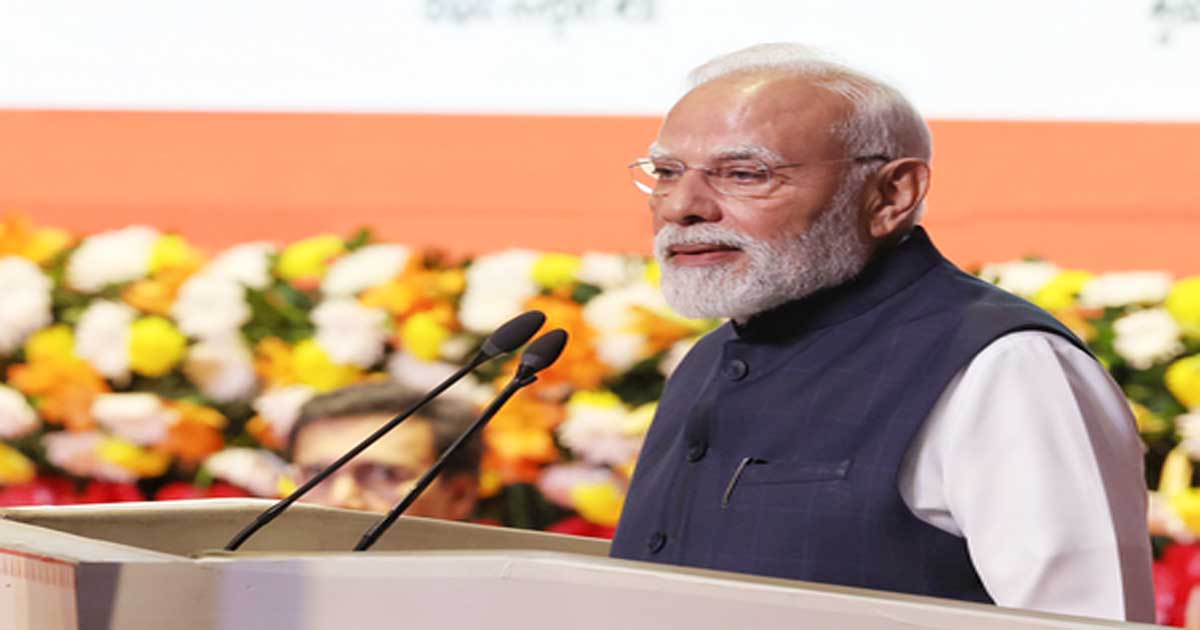
New Delhi, Oct 6: Prime Minister Narendra Modi will inaugurate the India Mobile Congress (IMC) 2025, Asia’s premier telecom and technology event, on October 8 in the national capital, Ministry of Communications said on Monday.
The four-day mega event, themed “Innovate to Transform,” will run till October 11 and is expected to showcase India’s growing leadership in the global digital and telecom space.
Union Minister for Communications Jyotiraditya M. Scindia visited the IMC 2025 venue to review the final preparations ahead of the Prime Minister’s inauguration.
Scindia also travelled to the venue and back via the Airport Metro, symbolising India’s push for modern and sustainable urban transport.
During his visit, the minister toured the exhibition area, interacted with participating startups and exhibitors, and chaired review meetings with senior officials from the Department of Telecommunications (DoT), the Cellular Operators Association of India (COAI), and other partner agencies.
Speaking to the media, Scindia said that IMC 2025 would mark a new era in global connectivity, where technologies like 5G, 6G, artificial intelligence (AI), machine learning (ML), the Internet of Things (IoT), and satellite communications would come together to shape the future.
He emphasised that the event reflects Prime Minister Modi’s vision of a self-reliant and innovative India that connects not only within but also with the world.
IMC 2025 is expected to attract more than 1.5 lakh visitors, 7,000 delegates from over 150 countries, and 400 exhibitors spread across 4.5 lakh square feet.
The event will also feature over 1,600 technology demonstrations and 100 sessions with more than 800 speakers discussing the latest developments in telecom and digital innovation.
Highlighting the scale of the event, Scindia said that IMC has grown from being a national platform to becoming a global technology congress that represents India’s digital leadership.
He added that the 2025 edition will include six major global summits — covering 6G research, artificial intelligence, cybersecurity, satellite communications, startups, and the Global Startup World Cup — India Edition.
The minister also underlined India’s achievements in the telecom sector, noting that the country now ranks among the world’s top three digital economies with 1.2 billion mobile subscribers, 970 million internet users, and the fastest-ever 5G rollout completed in just 22 months.
Business
Sensex rises 583 points, Nifty tops 25,000 as IT and banking stocks lead rally

Mumbai, Oct 6: The Indian stock markets continued their winning streak for the third straight session on Monday, driven by strong buying in the IT and banking shares.
The benchmark Sensex jumped 582.95 points, or 0.72 per cent, to close at 81,790.12, while the Nifty rose 183.4 points, or 0.74 per cent, to end the day at 25,077.
“From a technical perspective, Nifty has successfully broken above the key psychological and technical resistance level of 25,000, turning the structure decisively positive,” analysts said.
“Any dip toward the 25,000 zone is expected to act as a strong support level, with immediate resistance seen at 25,200 and 25,500,” they added.
The Bank Nifty also delivered a stellar performance, opening with a gap-up and maintaining its upward trajectory through the session.
The index surged past 56,100, hitting an intra-day high of 56,164, with next resistance levels seen at 56,300–56,500, and support placed around 55,821–55,500, experts stated.
Broader markets also joined the rally, with the Nifty Midcap 100 gaining 0.89 per cent and the Nifty Smallcap 100 inching up 0.28 per cent.
In the Sensex pack, TCS, Tech Mahindra, Eternal, Axis Bank, and Bajaj Finance were the top performers, climbing as much as 3 per cent.
Meanwhile, Trent, Tata Steel, Power Grid, and Titan ended the session with losses. Among sectors, IT stocks led the gains as the Nifty IT index surged 2.28 per cent.
The Nifty Private Bank, Financial Services, and Healthcare indices also closed in positive territory.
On the other hand, Metal, FMCG, and Media shares came under pressure, slipping up to 1 per cent.
Market experts said the upbeat sentiment in IT stocks and strong institutional buying supported the overall market momentum.
“The domestic equity market ended the session on a positive note, led by gains in the financial services and IT sectors, ahead of the Q2 results,” they said.
“The banking index outperformed, bolstered by strong quarterly updates announced by large scheduled banks and attractive valuations, while hospital stocks surged following the revision of CGHS rates,” market experts added.
-

 Crime3 years ago
Crime3 years agoClass 10 student jumps to death in Jaipur
-

 Maharashtra1 year ago
Maharashtra1 year agoMumbai Local Train Update: Central Railway’s New Timetable Comes Into Effect; Check Full List Of Revised Timings & Stations
-

 Maharashtra12 months ago
Maharashtra12 months agoMumbai To Go Toll-Free Tonight! Maharashtra Govt Announces Complete Toll Waiver For Light Motor Vehicles At All 5 Entry Points Of City
-

 Maharashtra1 year ago
Maharashtra1 year agoFalse photo of Imtiaz Jaleel’s rally, exposing the fooling conspiracy
-

 National News12 months ago
National News12 months agoMinistry of Railways rolls out Special Drive 4.0 with focus on digitisation, cleanliness, inclusiveness and grievance redressal
-

 Maharashtra11 months ago
Maharashtra11 months agoMaharashtra Elections 2024: Mumbai Metro & BEST Services Extended Till Midnight On Voting Day
-

 National News1 year ago
National News1 year agoJ&K: 4 Jawans Killed, 28 Injured After Bus Carrying BSF Personnel For Poll Duty Falls Into Gorge In Budgam; Terrifying Visuals Surface
-

 Crime12 months ago
Crime12 months agoBaba Siddique Murder: Mumbai Police Unable To Get Lawrence Bishnoi Custody Due To Home Ministry Order, Says Report



